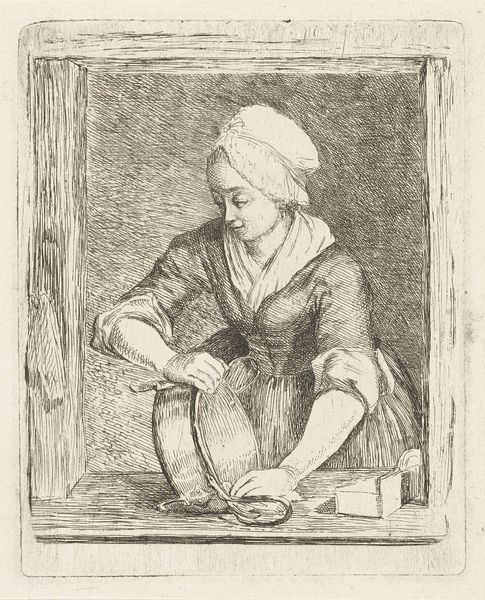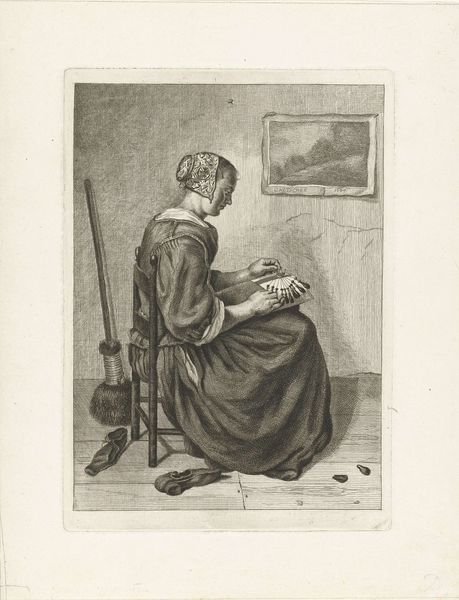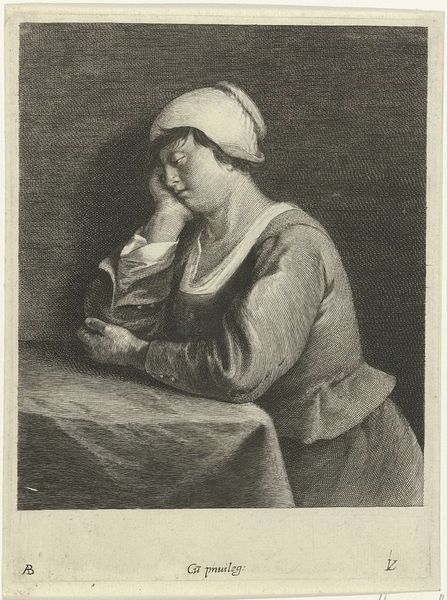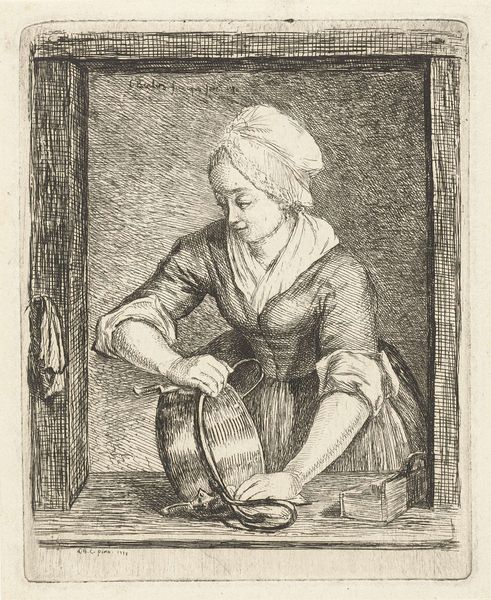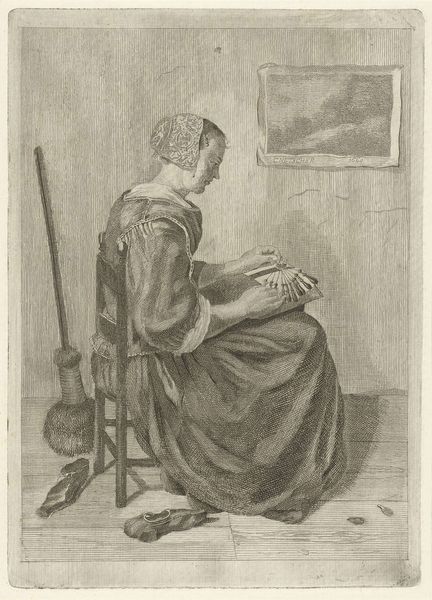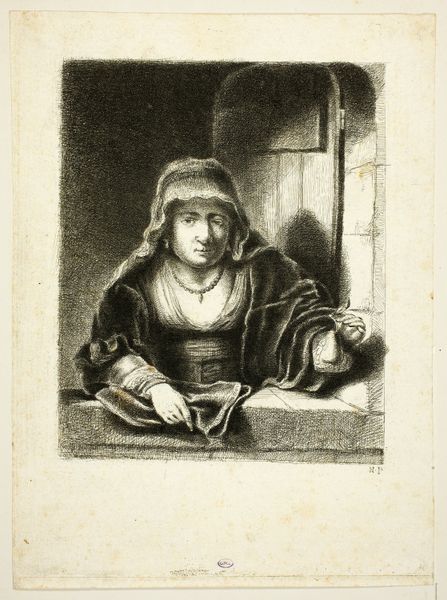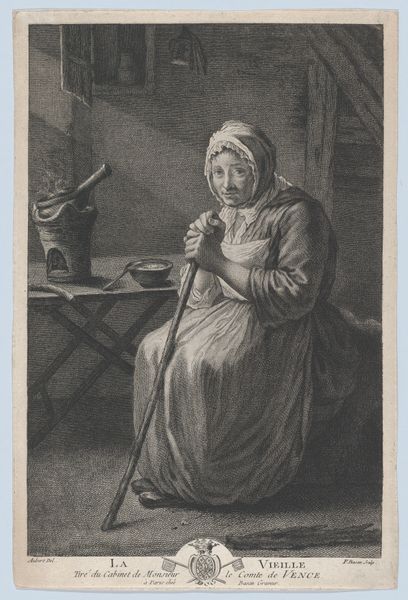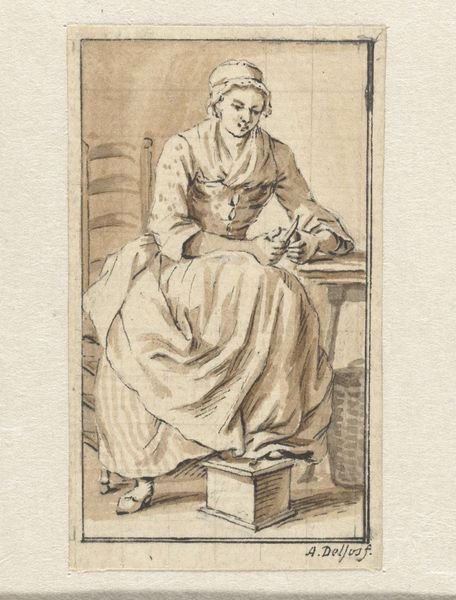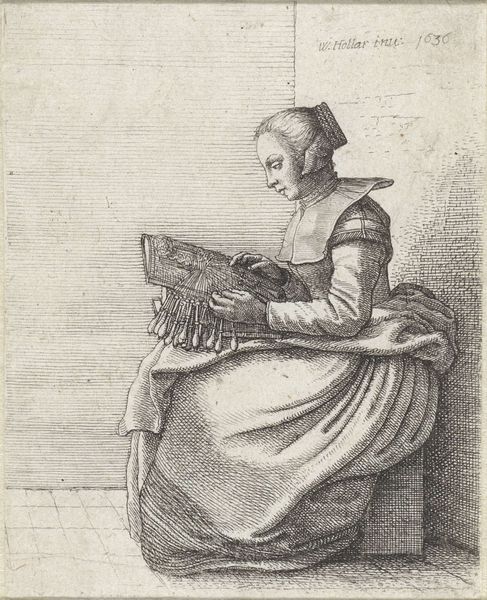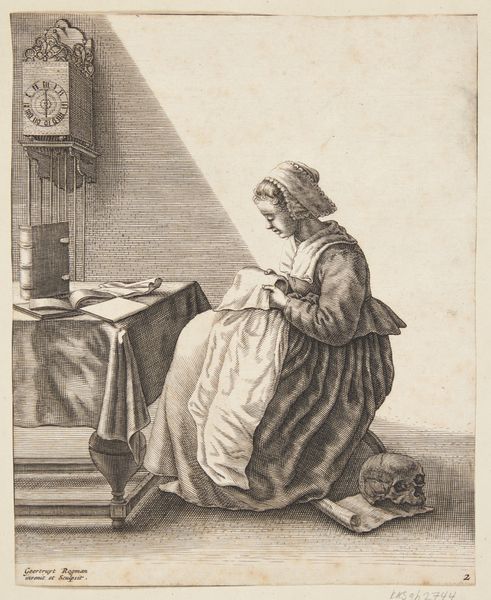
print, etching
#
portrait
# print
#
etching
#
old engraving style
#
genre-painting
Dimensions: height 80 mm, width 70 mm
Copyright: Rijks Museum: Open Domain
Editor: Here we have "Vrouw met naaigerei" or "Woman with Sewing," an etching by Johan Christiaan Elin, made sometime between 1743 and 1787. I’m immediately struck by the textures rendered through the etching process. How does your perspective deepen our understanding of this piece? Curator: Considering this from a materialist perspective, let's think about the labor involved. Etching itself is a craft, requiring specific skills and tools. This image highlights another kind of labor, the domestic work of sewing. What does the act of depicting this labor in a print suggest about its perceived value at the time? Editor: Perhaps that it was mundane enough to be overlooked, but valuable enough to record? How does that relate to consumption? Curator: Exactly. Prints allowed for wider distribution and consumption of images. This seemingly simple portrayal connects to broader economic and social systems. Someone had to create the tools, produce the paper and ink, not to mention the garment she’s working on. By understanding the materials, techniques, and social context, we gain insight into the hidden systems supporting both the making of the artwork and the woman's work. It's more than just a simple portrait; it is a document of its time, encapsulating production and value. What does this reflection bring to mind? Editor: I hadn't considered the implications of its reproducibility. Thinking about the material history opens up entirely new avenues of understanding, and gives worth to something commonplace. Curator: Absolutely. Examining art through this lens unveils layers often missed in traditional analyses.
Comments
No comments
Be the first to comment and join the conversation on the ultimate creative platform.
